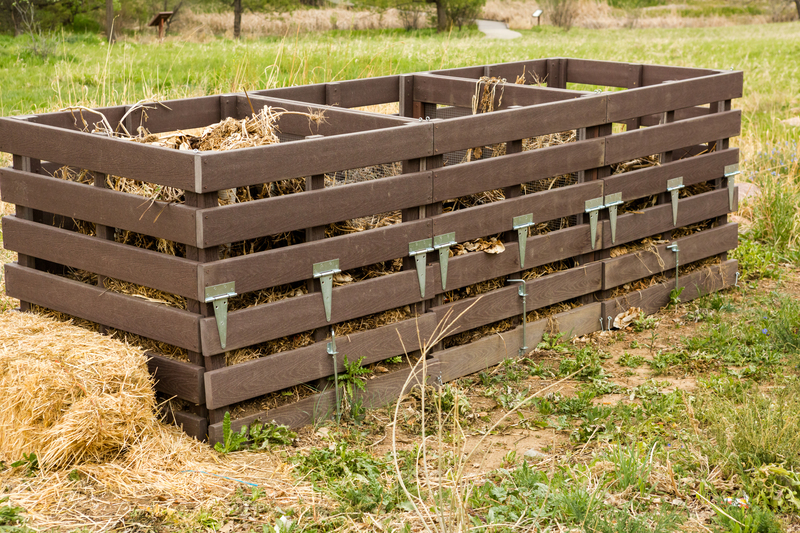Simple Steps to Responsibly Get Rid of PPE Waste
The COVID-19 pandemic has increased the global usage of Personal Protective Equipment (PPE) such as masks, gloves, face shields, and gowns. As a result, communities around the world are facing a new environmental challenge: PPE waste disposal. Ensuring that PPE is disposed of responsibly is crucial for public health, wildlife protection, and safeguarding our environment. This comprehensive guide will walk you through simple steps to get rid of PPE waste in an eco-friendly and safe manner.

Understanding PPE Waste
PPE waste primarily consists of single-use protective gear designed to prevent the spread of diseases. Despite its benefits for health and safety, improper PPE waste management contributes significantly to environmental pollution, particularly plastic pollution. Articles such as disposable masks and gloves often end up in landfills, water bodies, and even natural parks. These items are not only unsightly but also pose threats to animals, marine life, and even humans. Learning proper PPE waste disposal methods is vital in breaking this damaging cycle.
Common Types of PPE Contributing to Waste
- Disposable face masks (surgical masks, N95)
- Rubber or latex gloves
- Face shields and visors
- Protective gowns and shoe covers
Why Is Responsible PPE Waste Disposal Important?
The consequences of improper PPE disposal go far beyond cluttered streets. Here are some key reasons why you must get rid of PPE waste responsibly:
- Protects Wildlife: Discarded masks and gloves have been found in animal habitats, where creatures can get entangled or ingest them, leading to serious injuries or death.
- Reduces Pollution: Most PPE is made from plastics that take decades or even centuries to degrade, contributing to land and marine pollution.
- Minimizes Health Risks: Improperly disposed PPE may be contaminated with pathogens, creating a risk for sanitation workers and the wider community.
- Supports Recycling Efforts: Responsibly segregating PPE waste allows for better chances of recycling and energy recovery where available.
Simple Steps to Responsibly Dispose of PPE Waste
Follow these easy steps to ensure your used PPE doesn't harm the planet or people around you.
1. Remove and Handle PPE Carefully
- Remove PPE items slowly and avoid touching your face.
- Always wash or sanitize your hands after removing PPE.
- Follow public health procedures to reduce the risk of contamination.
2. Separate PPE Waste from Regular Waste
Do not throw PPE waste into the recycling or yard waste bins. PPE items are typically non-recyclable and should be separated from regular garbage and recyclables. Improper sorting can disrupt recycling streams, contaminate recyclables, and endanger recycling workers.
- Designate a special bin or bag for used PPE at home or in your workplace.
- Label the container "PPE Waste Only" for clarity.
- Seal the bag tightly before disposal.
3. Dispose as Regular Trash (Where No Specific Guidance Exists)
In locations where there are no dedicated PPE waste collections, you should discard single-use PPE in the general waste bin. Make sure to:
- Place used PPE in a securely tied plastic bag.
- Do not leave used PPE on the ground, benches, or public surfaces.
- If concerned about the risk of contamination (such as after caring for a COVID-positive person), double-bag the waste and wait 72 hours before adding it to general waste - a practice recommended in many local guidelines.
4. Follow Your Local Waste Management Regulations
Rules for responsible PPE waste disposal can vary by locality. In certain regions, PPE is considered hazardous waste and must be disposed of at special facilities. Others may offer drop-off bins for mask recycling.
- Check with your municipality's website or local waste authority for up-to-date PPE disposal policies.
- If businesses or organizations are involved, consult occupational health and safety guidelines.
5. Never Flush PPE Items Down the Toilet or Sink
Flushing masks, gloves, or wipes can block plumbing and pollute water bodies. Always place PPE waste in appropriate containers.
6. Consider PPE Recycling Programs
Some manufacturers and recycling organizations have introduced special PPE recycling programs. These initiatives collect used disposable masks, gloves, and face shields to process them into raw materials for manufacturing other products.
- Research local or national PPE recycling options, such as TerraCycle or equivalent schemes in your country.
- Coordinate with your workplace or community to set up collection boxes if available.
7. Promote and Use Reusable PPE Where Possible
One of the simplest ways to reduce PPE waste is to switch to reusable and washable PPE wherever feasible:
- Use cloth masks instead of single-use masks.
- Wash reusable masks after every use and handle them with clean hands.
- Disinfect face shields and protective glasses regularly.
This reduces the volume of plastic waste and offers long-term savings.
Environmental Impacts of Poor PPE Waste Management
Incorrectly handled PPE waste affects more than just urban spaces. Here are some shocking impacts:
- Microplastics Generation: PPE items break down into tiny plastic fragments, polluting water and food chains.
- Wildlife Threats: Animals can mistake masks and gloves for food or become entangled in the elastic bands.
- Visual Pollution: Littered PPE considerably spoils the natural beauty of parks, beaches, and towns.
- Public Health Risks: Used PPE can harbor bacteria, viruses, and other pathogens, constituting a biohazard in shared environments.
Innovative Solutions and Community Initiatives
Various organizations and communities are working towards innovative PPE waste management solutions:
- Recycling PPE: Some companies now offer recycling bins and take-back schemes for used PPE. These items are shredded and processed into construction materials, furniture, or even new PPE.
- Education and Awareness: Non-profits and municipal agencies are actively educating the public about proper PPE disposal and encouraging responsible habits.
- Mandates and Bans: Certain regions have enforced fines for littering PPE, encouraging compliance through regulation.
Getting involved in such community initiatives further amplifies your efforts to reduce PPE waste pollution.
Tips to Reduce and Responsibly Get Rid of PPE Waste
- Avoid excessive PPE use by assessing the real need for single-use items.
- Choose reusable options like cloth masks and washable gloves when appropriate.
- Carry a personal waste bag when outdoors for temporary PPE storage.
- Cut ear loops and straps before discarding masks to protect wildlife from entanglement.
- Use hand sanitizer and maintain hand hygiene after handling used PPE.
- Teach children and family members the importance of safe PPE waste practices.
- Share knowledge on social media or in local groups to inspire collective action.
PPE Waste and Businesses: What Employers Must Know
Workplaces must proactively address PPE waste management to keep employees and customers safe:
- Install dedicated PPE disposal bins in strategic locations across the premises.
- Regularly empty and disinfect PPE bins to prevent overflow and contamination.
- Educate staff about the importance of segregating and properly disposing of PPE waste.
Frequently Asked Questions About PPE Waste Disposal
Can PPE Waste Be Recycled?
Most single-use PPE is made from polypropylene or similar plastics that are not accepted in regular household recycling. Specialized programs, however, are available in some areas for recycling masks and gloves.
What Should I Do If I Find Littered PPE in Public Spaces?
If you choose to pick up another person's PPE waste, always use gloves or a litter picker, dispose of it in a sealed bag, and clean your hands thoroughly afterward.
How Long Does PPE Take to Decompose?
Most disposable masks and gloves are made from plastics that can persist in the environment for 100-400 years.
What Are the Dangers of Burning PPE Waste?
Burning PPE can release toxic gases and microplastics, harming air quality and public health. Always follow official guidelines for disposal.

The Role of Governments and Policy Makers
Large-scale change in PPE waste management is only possible through robust policy. Governments play a vital role in:
- Providing clear guidelines for PPE waste segregation, collection, handling, and disposal.
- Investing in recycling infrastructure to handle PPE at a larger scale.
- Promoting public awareness campaigns about responsible PPE use and disposal.
Advocating for stricter littering laws and supporting community-based initiatives amplify responsible waste management efforts.
Conclusion: Do Your Part to Responsibly Get Rid of PPE Waste
The increase in PPE usage was necessary for public health; however, neglecting the impact of its waste can have dire consequences for our planet and future generations. Taking simple, responsible steps to get rid of PPE waste is a collective responsibility. By following the guidelines outlined above, promoting the use of reusable protective gear, participating in local recycling programs, and spreading awareness, you contribute greatly to your community's safety and environmental well-being.
Together, we can minimize PPE waste pollution and build a more resilient and cleaner world for all.
